The ultra-sleek sky yacht was made by an Italian designer and a German businessman by fusing yachts and private planes. The approximately 150-meter-long boat has eight counter-rotating electric engines that can run at 60 knots for more than two days without creating any pollution. They are powered by ultra-lightweight batteries and solar panels. The air boat is sustainable in other respects as well, including the fact that it will be made entirely of carbon fiber, a strong and lightweight material.
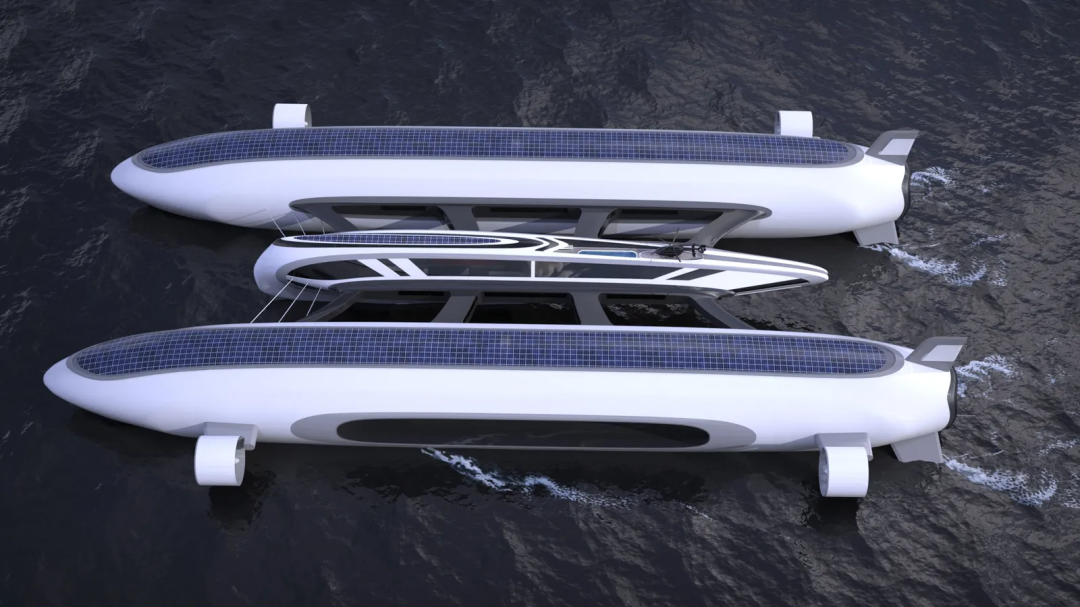
The 500-foot-long futuristic vessel consists of three primary sections: a central compartment with a living room and dining area, flanked by two inflatable helium blimps containing 10 suites.
The futuristic-looking design by Lazzarini includes a huge living room and dining space encased within the sky yacht’s central torpedo-shaped structure, which is connected to two 150-foot-long blimps through eight carbon bridges (four on each side). And the blimps, which carry a remarkable 14,125,867 cubic feet of helium and flank the main compartment, aren’t only there to keep the airplane aloft: There are 10 guest rooms between the two, each with a panoramic outlook.
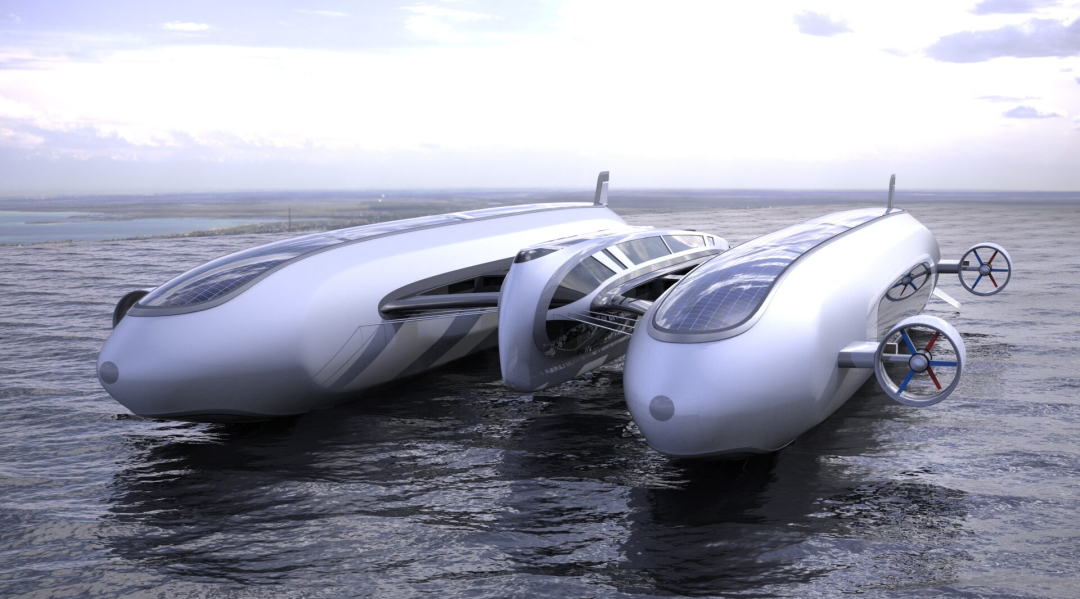
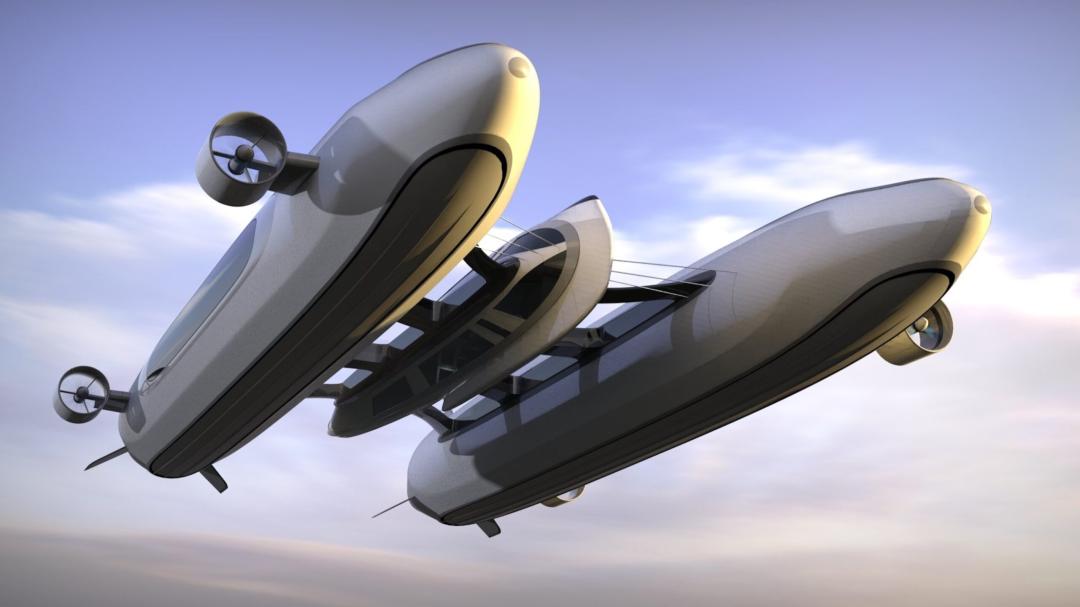
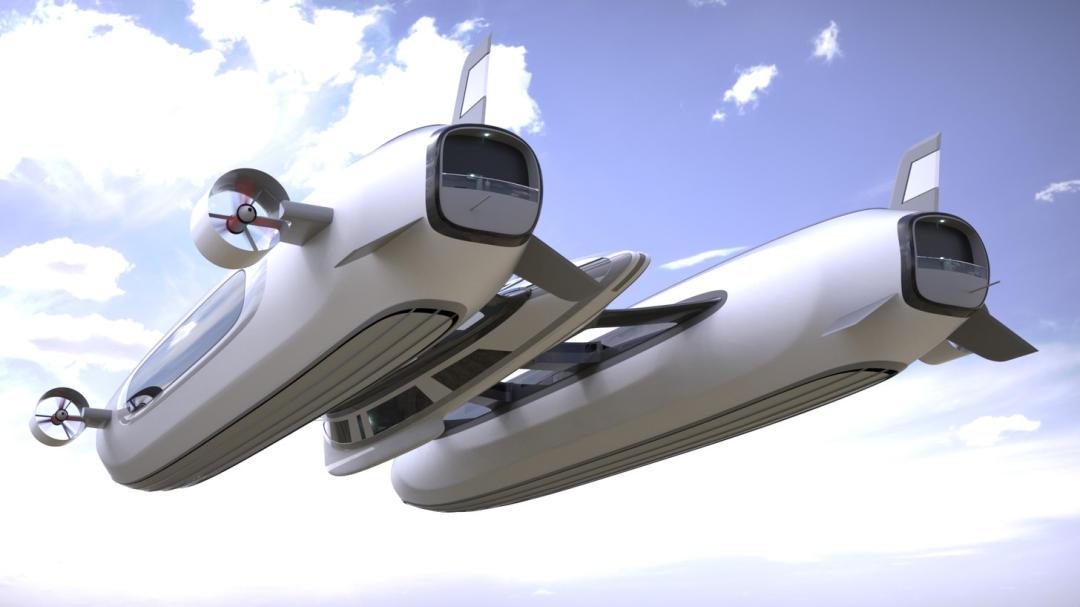
When the owner decides to sail on the water rather than the air, the revolutionary machine may float atop the water’s surface thanks to the two balloon-like compartments on either side of the remarkable craft. The sky yacht is still a long way from displacing ships and aircraft, even while the freedom to select the form of transportation that makes the most sense for a certain trip seems ideal.
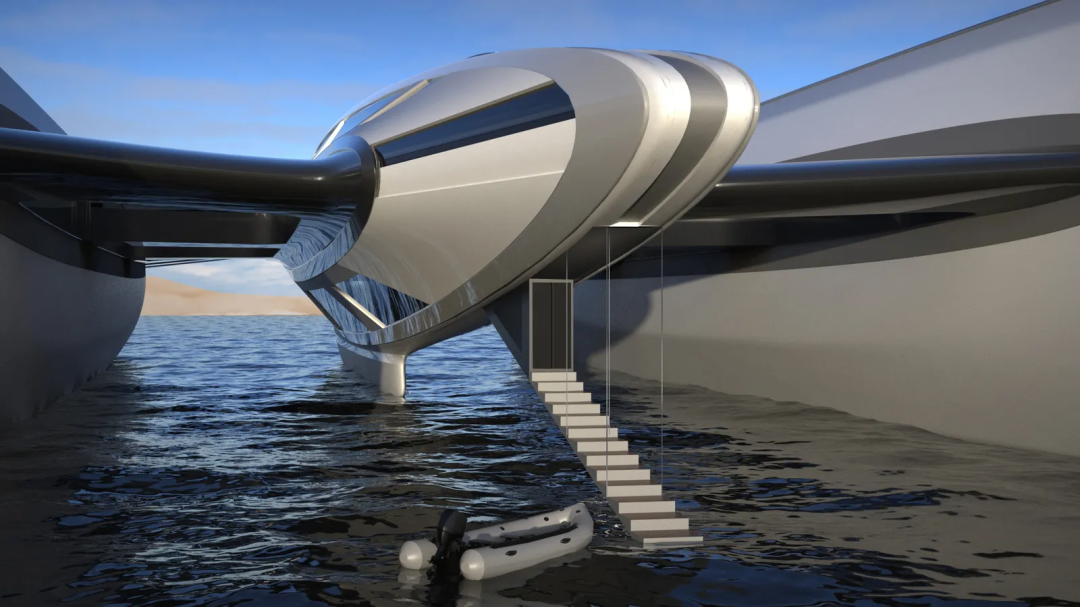
The enormous sky yacht is too large to park at a marina while passengers embark, so it is equipped with a retractable staircase.
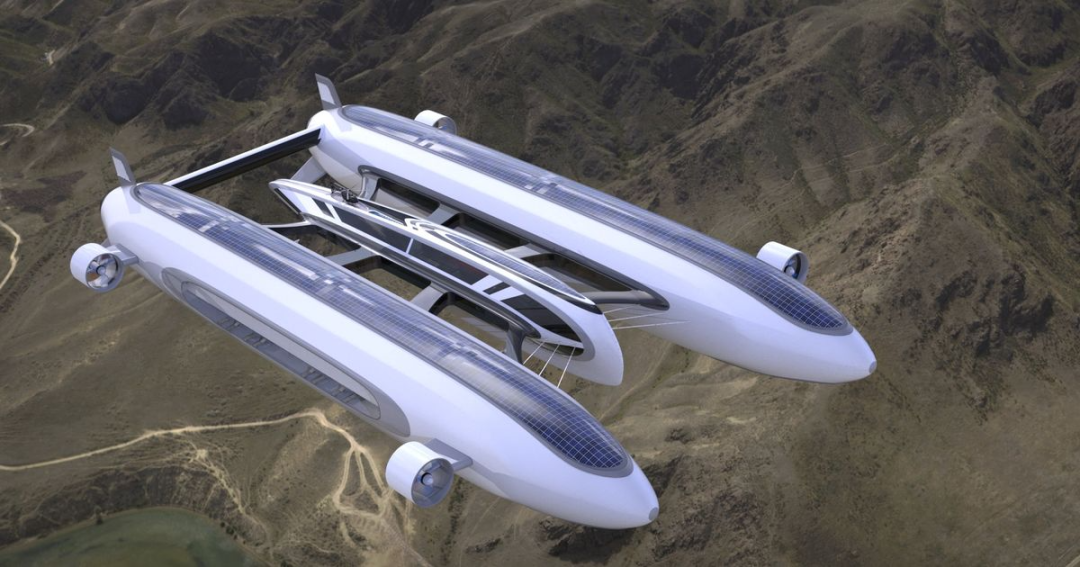
Nonetheless, for the individual owner who paid an estimated $627,511,500 for the sky yacht, his new form of transportation signals the future. In reality, Lazzarini has stated that a first-scale model prototype will fly later this year, and many designs (of varied lengths) are already in the early stages of engineering and prototyping. As a result, by the end of the decade, we may all be passengers on a flying watercraft.